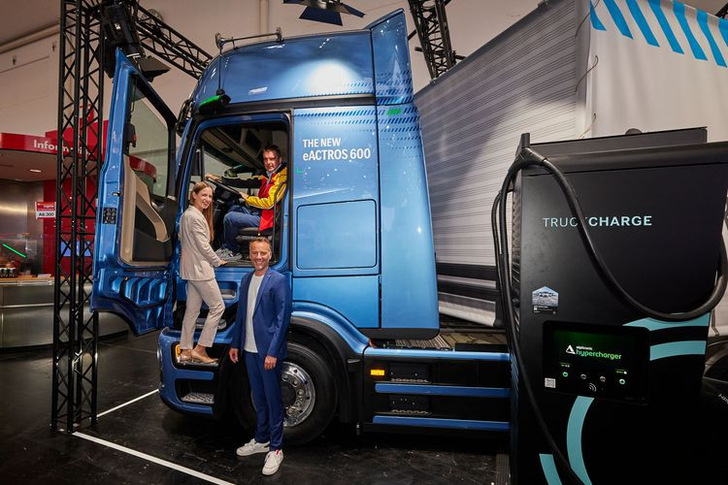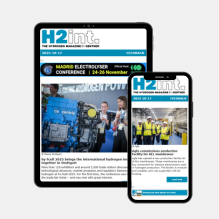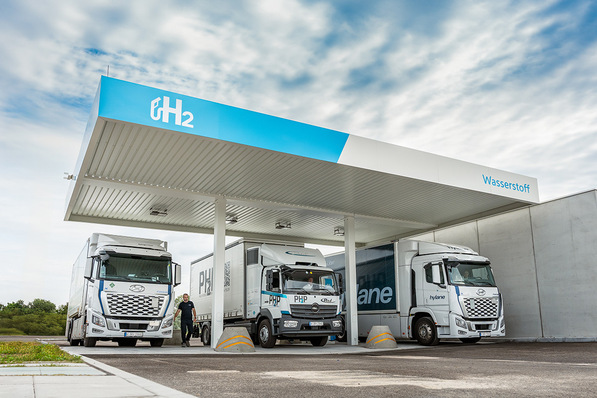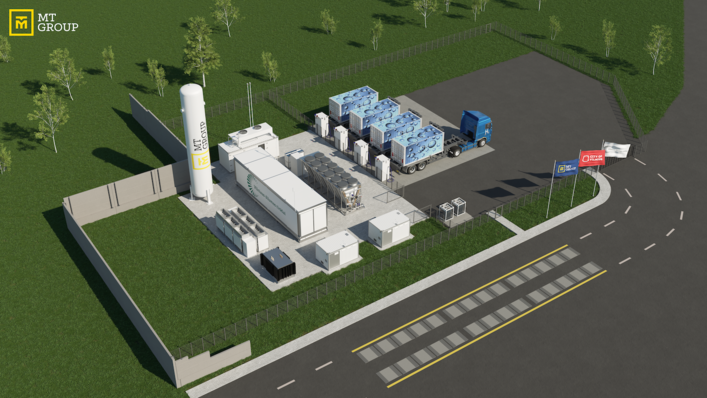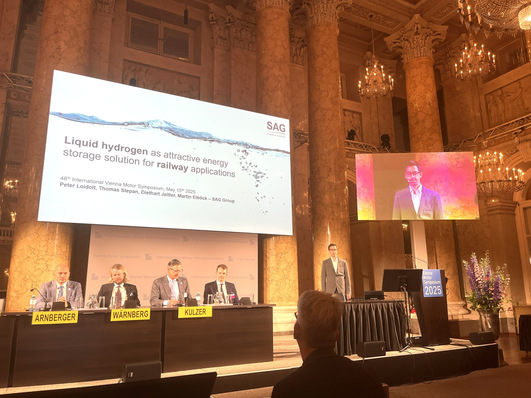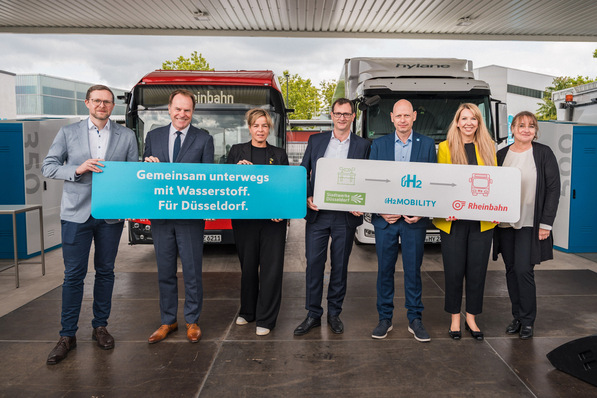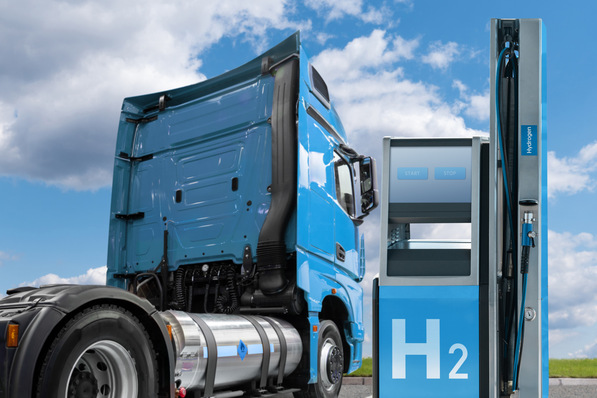DHL, Daimler Truck, and commercial vehicle leasing company Hylane GmbH announced their cooperation at the „transport logistic“ trade fair in Munich. Under the agreement, DHL will lease 30 Mercedes-Benz eActros 600 trucks via Hylane’s pay-per-use model, with billing based on actual kilometers driven.
The trucks will be used by DHL’s Post & Parcel Germany division for inter-hub parcel transport. According to the companies, delivery of the vehicles is planned by the end of the second quarter of 2026. Christian Wilz, Head of Mercedes-Benz Trucks & Fuso at Daimler Truck Germany, described the order as „a strong vote of confidence in our technology.” The eActros 600 was specifically developed for long-haul operations and is designed to be economically viable.
Although Hylane’s name reflects its original focus on hydrogen fuel cell vehicles, this marks the company’s first major order involving battery-electric trucks. “Integrating battery-electric trucks into our fleet is a key milestone in Hylane’s growth,” said Managing Director Dr. Sara Schiffer. The company aims to offer customers a technology-neutral portfolio that includes both battery-electric and hydrogen-powered vehicles.
Battery-electric eActros 600 capable of up to 1,000 kilometers per day
Until recently, hydrogen fuel cell trucks had a clear advantage in terms of range. However, battery technology is catching up. The Mercedes-Benz eActros 600 is Daimler Truck’s new long-haul battery-electric model. It features a battery capacity of over 600 kilowatt-hours and, according to the manufacturer, a range of approximately 500 kilometers. With intermediate charging during mandatory rest breaks, daily ranges of over 1,000 kilometers are achievable. The batteries use lithium iron phosphate (LFP) cell technology. The eActros 600 was launched in December 2024 and was named “International Truck of the Year 2025.”
DHL has so far used electric vehicles primarily for last-mile delivery
The trucks are part of the now-expired German federal funding program “Climate-friendly Commercial Vehicles and Infrastructure” (KsNI), which aimed to reduce CO₂ emissions in road freight transport through the use of alternative drivetrains.
DHL already operates a fleet of 16 battery-electric and 450 CNG trucks for transport, as well as 32,400 electric delivery vans for last-mile logistics. The company also operates 10 CNG refueling stations and 41,000 charging points. By 2030, DHL aims to increase the share of alternative drivetrains in its transport operations to around 30 percent. In the long term, the company is targeting net-zero emissions by 2050.


